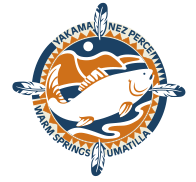Long-term Reconstruction of Deep-water Oxygen Conditions in Osoyoos Lake (British Columbia, Canada): Implications for Okanagan River Sockeye Salmon
Abstract
Osoyoos Lake is the primary nursery lake supporting Sockeye Salmon (Onchorhynchus nerka) originating from the Okanagan River system in south-central British Columbia, Canada. By the early 1960s, Osoyoos Lake had experienced significant cultural eutrophication related to rapid human development of the watershed, increasing total phosphorus concentrations, and frequent algal blooms. Concern exists regarding recent (post-1990s) declines in hypolimnetic oxygen concentrations and the potential degradation of salmon habitat in this multi-basin lake. However, reliable observations are largely unavailable for oxygen conditions prior to the mid-1990s. We reconstructed late-summer volume-weighted hypolimnetic oxygen (VWHO) concentrations in Osoyoos Lake from the late 1800s to 2009 by examining past chironomid (Diptera: Chironomidae) subfossil assemblages from ²¹⁰Pb-dated lake sediment cores. Chironomid-inferred VWHO revealed only slight variations since the late 1800s (mean values for the north and south basins are 4.4 and 2.9 mg/L, respectively), with seemingly little response to the cultural eutrophication of the mid-20th century. The chironomid-inferred VWHO trends suggest that the current management target of 5.8 mg/L dissolved oxygen for both basins of Osoyoos Lake may require revision to better reflect reference conditions and natural seasonal anoxia.
Authors
Citation
Simmatis, B., A. Jeziorski, A. Zemanek, D.T. Selbie, K. Hyatt, J.K. Fryer, B.F. Cumming, and J.P. Smol. 2018. Long-term reconstruction of deep-water oxygen conditions in Osoyoos Lake: implications for Okanagan River Sockeye Salmon. Lake and Reservoir Management 34(4):392-400. Online at https://doi.org/10.1080/10402381.2018.1488779.
